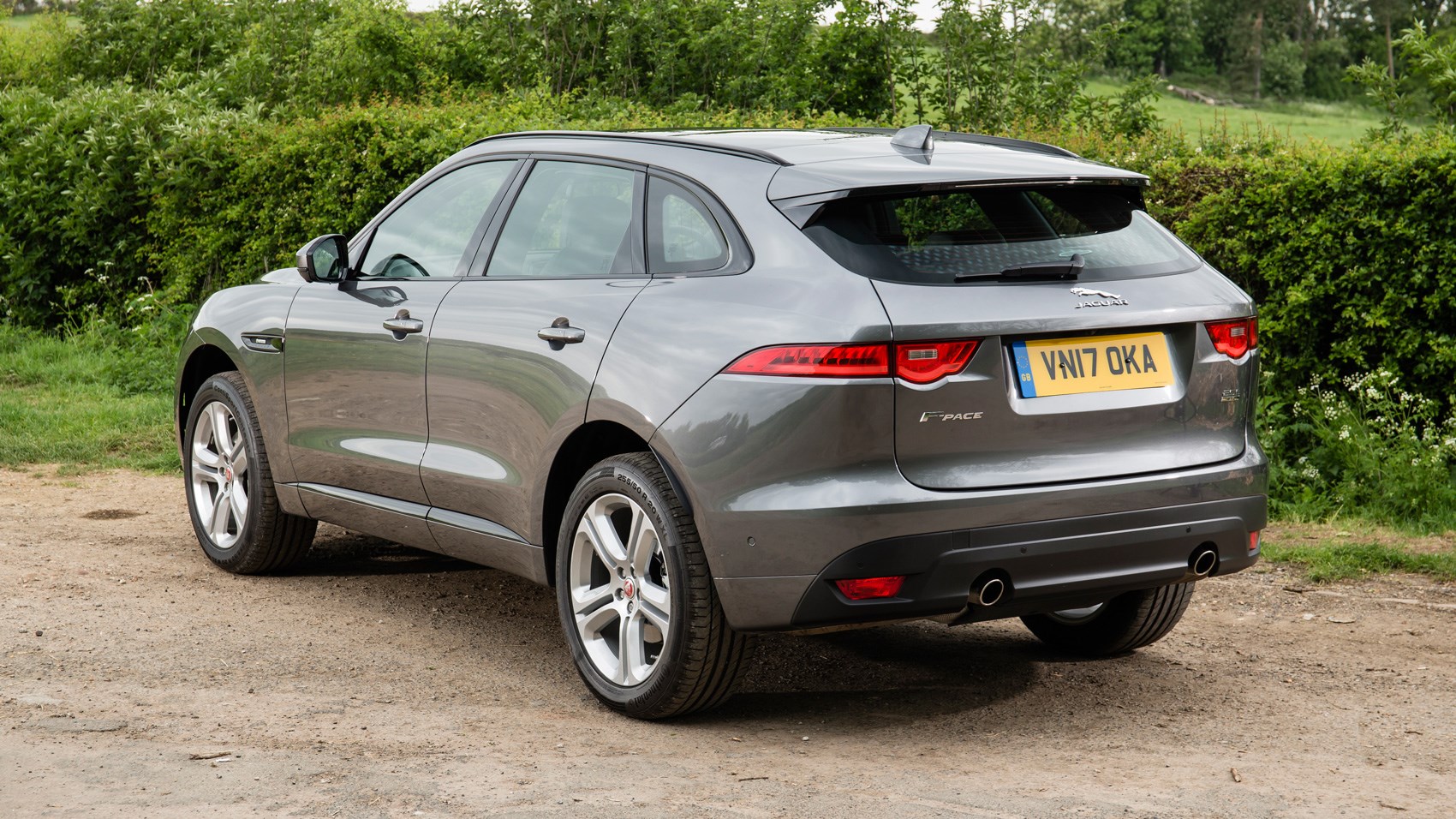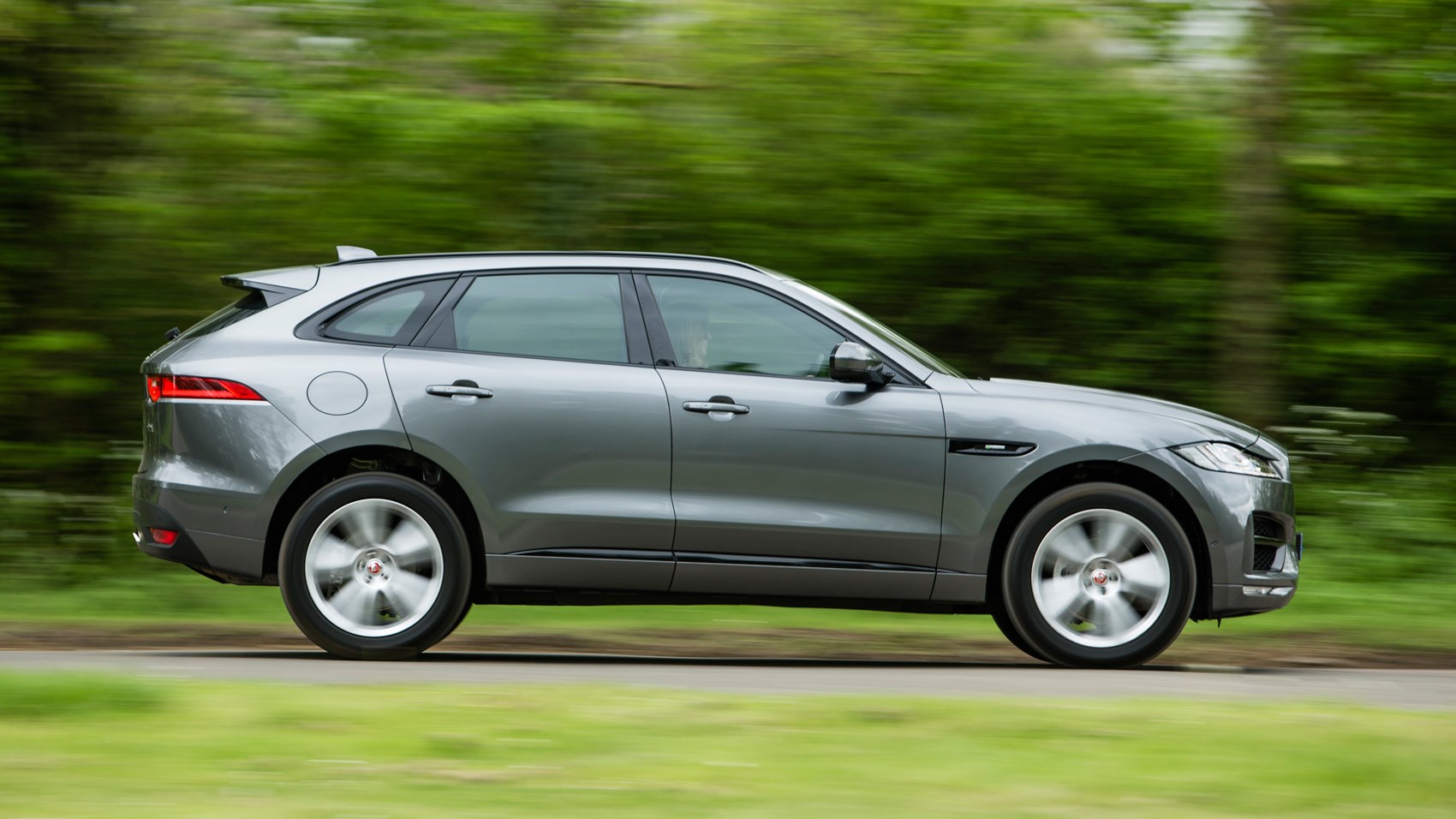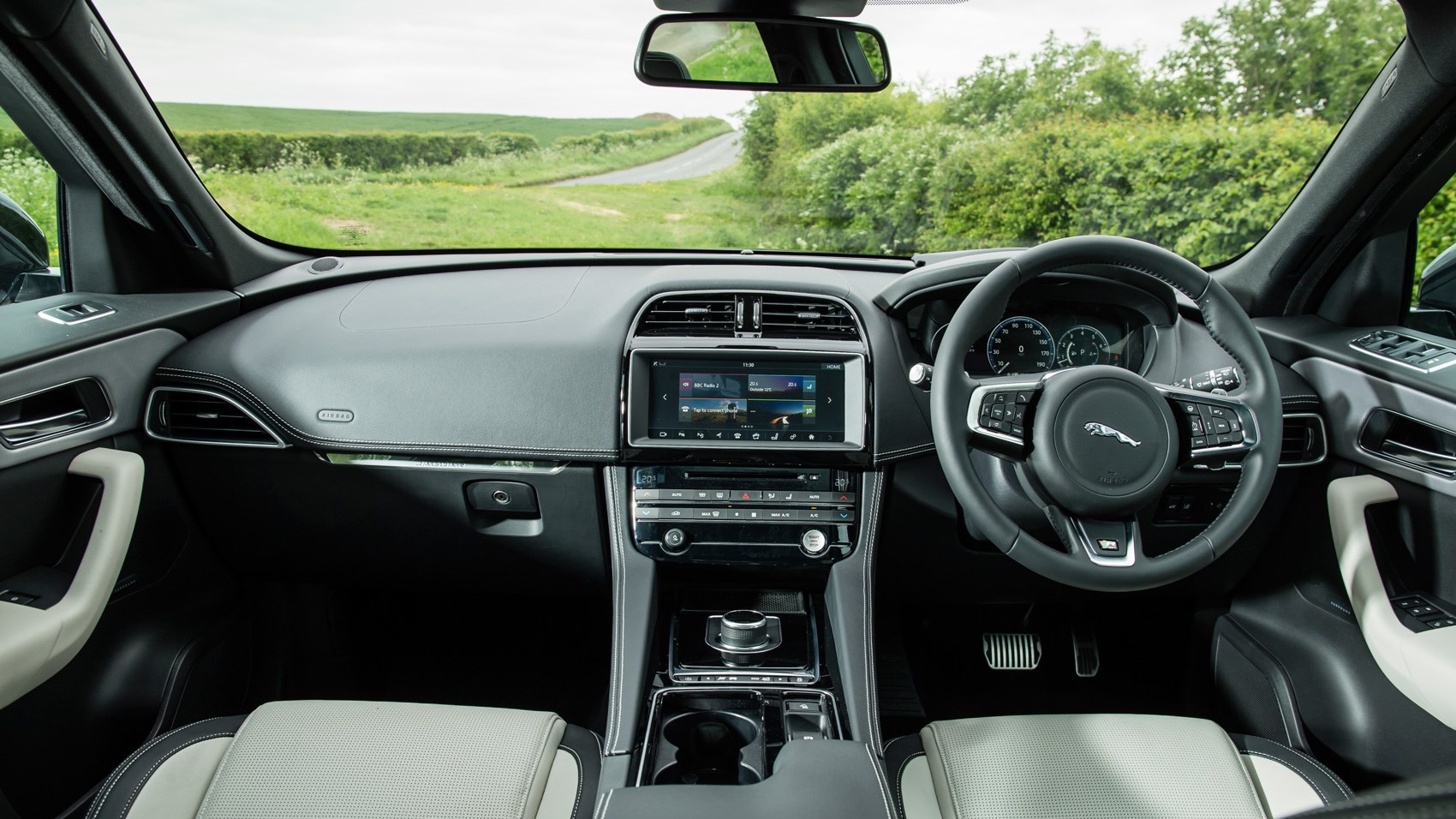► MY2018 Jag F-Pace driven
► Mid-spec petrol guise here
► Is petrol your best bet?
Like the XE and XF, the Jaguar F-Pace has been subject to regular updates over its lifespan. It’s a bit like a smartphone software update; the physical thing stays the same but the manufacturer finds new features to add or refine to keep it fresh.
For the 2018 model year, Jaguar revealed a range of new engine choices including a basic eco-focused 162bhp E-Performance diesel, a 237bhp Ingenium diesel and a new Ingenium petrol with 247bhp (the one we’re testing here). New colours, wheels and interior trims were added for more customer choice and bits of extra tech were either made available or became standard, including a digital instrument cluster.
Let’s talk about the Jaguar F-Pace’s new Ingenium engine first…
In this case, it’s the 247bhp 2.0-litre four-cylinder turbo badged 25t. It’s the least powerful petrol you can get in the F-Pace, slotting beneath a 296bhp 2.0-litre that also sees service in the F-Type 4cyl and the fruity supercharged V6 with 375bhp if you favour the green pump.

All F-Pace 25t models are specced with all-wheel drive and the ubiquitous ZF eight-speed gearbox. Performance numbers are mid-table for this class of car, with a 0-60mph launch over with in 6.4 seconds and a top speed of 135mph.
Enough numbers, what’s it actually like?
Not really your best choice, in the grand scheme of things. Let’s talk positives first, though. Engine noise is minimal at a cruise and the initial pull-away is strong – it’s an engine eager to perform and even comes with a surprisingly tuneful wail between 2500 and 4000rpm. Acceleration is purposeful if not exactly stupidly fast, but you don’t buy a mid-spec SUV for traffic light drag races, do you?
Even so, when you do push it and the revs climb past that tuneful mid-range, the noise turns into a strained din and the surge of power seems to drop off. Plus, the combination of low-end shove and the slushy ZF ‘box makes for a few jerky throttle responses at low speeds, unsettling the experience.
It’s also not the most economical engine in the range; a claimed combined economy figure of 38.2mpg seems a little far-fetched when our numbers were circling around 27mpg. The way punchier, much smoother and admittedly much more expensive diesel S we recently tested was hovering around 35 to 40mpg on our extended test.
Jaguar F-Pace review: the view from our sister site CarZing
Does the F-Pace still handle well?
Oh, definitely. The wheel has plenty of weight to it and is very precise, while the F-Pace’s lack of body roll through the twisty bits shames a lot of its rivals.

Our car was on 19s, which look tiny in the F-Pace’s wells and weirdly don’t do much to the ride; Jag’s SUV can still feel a bit fidgety through town, with the ride set up more for agility and handling than out-and-out plushness.
The F-Pace’s clean lines and sculpted bodywork makes for a distinct lack of wind noise and tyre roar is kept to a decently low level, too.
Any changes to the interior?
Not many that we noticed. The whole interior design remains the same, materials are solid enough and the classic rising gear selector still pops out to attention when you start it up. Our car’s digital instrument cluster looks clean and can be configured with different graphics and interchangeable panels of information.
The InControl Touch Pro infotainment system still looks sharp but isn’t the easiest to use and glitched a couple of times during our time with it; the whole screen froze on one occasion, while at a separate time the car’s cameras and parking system was convinced there was a trailer attached despite our attempts to persuade it otherwise, disengaging the Park Assist.
What about fitting other people in it and stuff?
The big wheelarches invade access to the rear, but once inside the Jaguar F-Pace there’s loads of room, the seats are comfy and it’s not that claustrophobic back there. Plus, the 650-litre boot trumps that of a Porsche Macan and Mercedes GLC.

Our only nit-pick here is how small the rear window is; get used to looking out of a porthole through the rear-view mirror.
Verdict
The F-Pace still remains one of the better-handling, sharper and more desirable mid-size premium SUVs out there – so, regardless of which engine you pick, it still makes a strong case for itself.
Still though, we’d be remiss to point out that while the 25t version offers buyers more choice (especially when more buyers are steering away from diesel), the sums don’t totally add up. Stick with a diesel and you not only have a fashionable, great-handling SUV but one that does more than 30mpg in real-life conditions.
All our Mercedes-Benz reviews in one place